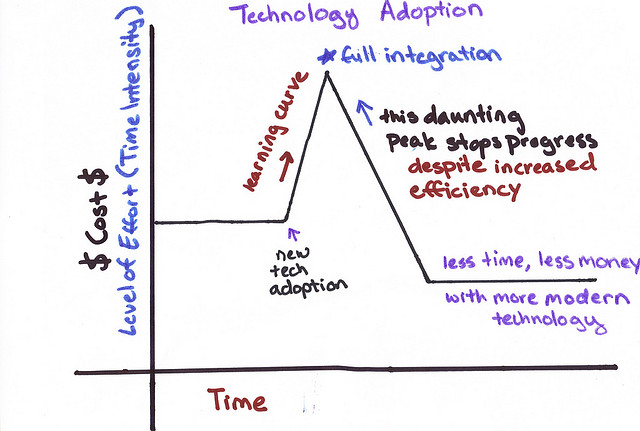Minimum Viable Bureaucracy: Introduction
We really are rather fortunate, aren’t we? I mean right now, as I write this there will be conferences all over the world taking place. And a good number of those, especially in my areas of interest, are likely to be livestreamed meaning I can (theoretically) follow along at home. But more than that, these live streamed sessions are often also recorded meaning that these talks can kept for posterity and used as learning materials in a course (like a MOOC).
The difficulty with the super-abundance of learning resources is that it’s difficult to know where to begin. It’s hard to know what’s worth paying attention to – hence the Web Literacy Standard (“here’s the things you should pay attention to if you want to get better at reading, writing and participating on the Web”). At Mozilla we have ‘brown bags’ every so often – talks that take place at a Mozilla office (often Mountain View) that are streamed out via Air Mozilla. As with any kind of event, some of these are of more or less interest to me and/or feature people who can present better than others.
Recently I my colleagues directed my attention towards a brown bag given by Laura Thomson entitled Minimum Viable Bureaucracy. It’s so good that, after giving the talk at OSCon Laura was asked if she could repeat it so it could be streamed and recorded via Air Mozilla. It’s an hour long so I’ve taken the video, extracted the audio and created a separate MP3 file from each section of Laura’s talk.
So what’s it about? What is ‘Minimum Viable Bureaucracy’ (MVB)? Well, as Laura rather succinctly explains, it’s the difference between ‘getting your ducks in a row’ and ‘having self-organising ducks’. MVB is a way of having just enough process to make things work, but not so much as to make it cumbersome. It’s named after Eric Ries’ idea of a Minimum Viable Product which, “has just those features that allow the product to be deployed, and no more.”
The contents of Laura’s talk include:
- Basics of chaordic systems
- Building trust and preserving autonomy
- Effective communication practices
- Problem solving in a less-structured environment
- Goals, scheduling, and anti-estimation
- Shipping and managing scope creep and perfectionism
- How to lead instead of merely managing
- Emergent process and how to iterate
I truly believe that MVB is an approach that can be used in whole or in part in any kind of organisation. Obviously, a technology company with a talented, tech-savvy, distributed workforce is going to be an ideal testbed, but there’s much in here that can be adopted by even the most reactionary, stuffy institution.
My posts writing up Laura’s ideas can be found below. The original talk is on Air Mozilla, the slides are on Speakerdeck, and there’s a backup of the slides and audio on the Internet Archive.
- Introduction
- Scale, Chaordic Systems & Trust
- Practicalities
- Problem Solving and Decision Making
- Goals, scheduling, shipping
- Minimum Viable Bureaucracy: Why have managers?
Also, you might be interested in following Laura on Twitter – she’s @lxt.
Image from Bonkers World



